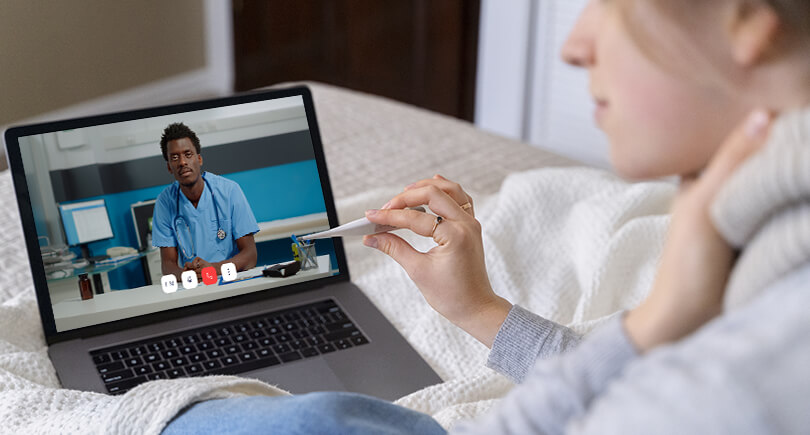Contents
1. Introduction
The healthcare industry is in the midst of tremendous change as the adoption of newer technologies rapidly gains momentum. The pandemic accelerated that adoption and even spawned a new type of vaccine that took a fraction of the time to develop compared to vaccines before. One of the most promising technologies transforming healthcare is none other than telehealth. Simply put, telehealth uses digital communication technologies to access healthcare services remotely.
The growing footprint of telemedicine has been a shot in the arm for nursing. As more people continue to access care remotely, the nurses have been at the front lines helping to deliver care themselves or coordinate the delivery of care. Nurses have already been using telehealth extensively in settings such as schools, commercial establishments, hotels, post-acute care facilities, etc. It’s only been growing as we progress into the second year of the pandemic. It won’t be surprising to see telemedicine becoming closely entwined with nursing soon.
2. What are Telehealth and Telemedicine?
Telehealth and telemedicine are novel technologies rapidly adopted by the healthcare industry. While the ideas behind them existed years ago, it took a pandemic for everyone to realize their importance. The two technologies have addressed challenges in access to care and other inequities. So what are they? In this section, we explore telehealth and telemedicine.
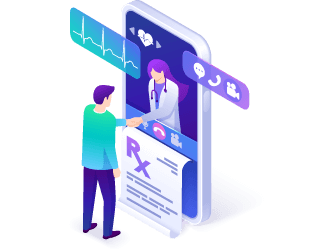
Telehealth and Telemedicine are novel technologies that are being rapidly adopted by the healthcare industry. While the ideas behind them existed years ago, it took a pandemic for everyone to realize their importance. The two technologies have been shown to address challenges in access to care and other inequities. So what are they? In this section, we explore telehealth and telemedicine.
The term telehealth is a broad one that encompasses a wide array of technologies and services to deliver patient care. These services are delivered remotely, and the people giving and receiving care communicate digitally over the internet using smartphones, tablets, and computers. In addition to actual clinical services, telehealth also includes disseminating health education, health information for patients and medical professionals, encouraging collaboration among multiple doctors, training health workers, and so on. All of these are carried out remotely through the internet and telecommunication channels. Remote patient monitoring, health applications on smartphones, virtual consultations are some examples of telehealth.
In addition to the United States, many countries have begun implementing telehealth in various degrees into their healthcare industries. It has had a major impact on how people access care.

On the other hand, telemedicine is the diagnosis and subsequent delivery of care to patients remotely through telecommunications. So, it is safe to say that telemedicine is a subspace of telehealth, and telemedicine strictly refers to the practice of medicine remotely. At the same time, telehealth is an umbrella term consisting of activities and elements of the overall healthcare system carried out over telecommunications mediums.
3. Benefits of Telemedicine
Telehealth technologies such as mHealth (mobile health) video consultations and collaborative care platforms have become immensely popular among doctors, patients, and payers alike.
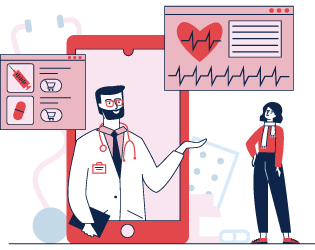
Although a novel technology, telemedicine has become highly popular among doctors and patients. Several telehealth technologies that were little more than concepts took off during the Covid-19 Pandemic. In this section, we will explore the benefits of using telehealth software in detail.
I. Improved Continuity of Care
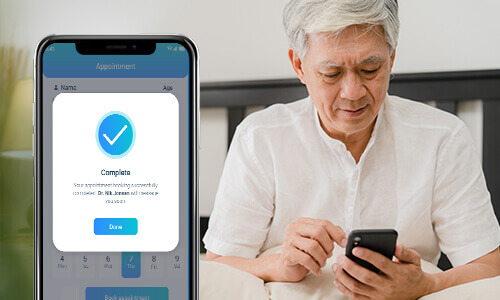
Patients who have had extensive surgery or are recovering from serious conditions must stay in touch with their doctors regularly. Booking regular appointments and waiting for consultations and follow-ups repeatedly over months can be highly inconvenient.
But telehealth solutions can accelerate the entire lifecycle of the continuity of care following major procedures or treatments. Patients would no longer need to go to a clinic in-person for follow-up consultations. A telehealth solution or technology platform will let them book appointments online and have virtual consultations. Doctors can recommend tests or change prescriptions without having to see patients physically.
Seeing a doctor using a device and the internet without stepping outside helps patients immensely. A telemedicine app for doctors goes a long way in helping patients throughout the continuity of care. This is especially true for patients who are old or those facing transportation problems. Moreover, an app for telemedicine in nursing will help larger clinics deploy their nursing staff and serve more patients in recovery.
II. More Patients For Providers
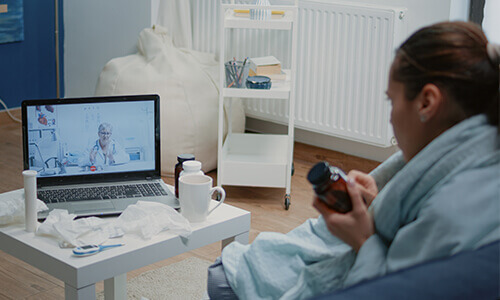
No-shows for appointments can be frustrating for providers and also bad for patients. But a digital platform for telemedicine helps to reduce the number of missed appointments significantly. This is because such telehealth apps enable people to connect with their physicians from anywhere using their smartphones or computers.
Additionally, people living in distant locations can also get a virtual consultation using a telemedicine app. This is a major revenue multiplier for providers as they will experience a broadening of their patient base. In other words, telehealth software systems provide a win-win for patients and providers.
III. Reduction in Cost

For providers, things like front office staff, waiting room, and manual appointment management add to the overhead. However, telemedicine software integrated with practice management solutions helps providers with private practices avoid the overhead.
Patients can use telehealth mobile apps to schedule online appointments and virtual consultations. This will eliminate their need to come to the clinic physically and for providers to operate with minimal staff. As a result, there is a considerable reduction in cost for providers in the long run.
IV. Greater Access to Mental Health Therapists

Mental health is growing to be one of the most pressing public health concerns in the United States. Tens of millions of Americans have admitted to suffering from at least one mental health problem. However, many of the country’s population live in locations without a single therapist. They are forced to drive long distances for therapy.
But telehealth solutions will enable patients to connect with providers and have therapy online remotely. Additionally, the patients can receive care in the privacy of their own homes. This also encourages more people to open up about their struggles and cope with their situations better.
V. Better Access to Specialists

People living in remote rural locations suffer from a serious shortage of specialists. They often have to travel long distances for appointments and follow-ups. But a telemedicine app will enable people living in underserved locations to connect with specialists at major hospitals.
The ability to speak to cardiologists, oncologists, nephrologists, and other medical specialists will reduce the healthcare inequity in the country.
VI. Reduced Exposure During Epidemics/Pandemics
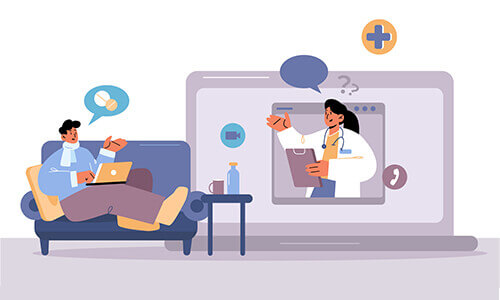
The value of integrated healthcare solutions with telehealth was realized during the Covid-19 Pandemic when the government imposed curfews. This was important to curb the increasing spread of infection and keep people safe. This was when telehealth software came to everyone’s rescue.
The Pandemic made it risky to visit hospitals since they are the places one was most likely to contract the coronavirus. People needing consultations could have them virtually through telehealth software from their homes. In other words, such software solutions helped curb the spread of infection.
4. Role of Telehealth in Nursing
We’ve already seen the potential of telehealth technologies. Since nursing is closely related to the delivery of care, it invariably has a major role in the growing influence of telehealth. Care providers are increasingly encouraging the convergence of telehealth with nursing. In this section, we’ll see what role nursing occupies in telehealth.
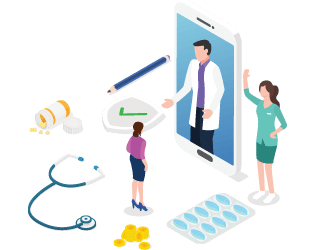
We’ve already seen the potential of telehealth technologies. Since nursing is closely related to the delivery of care, it invariably has a major role in the growing influence of telehealth. Care providers are increasingly encouraging the convergence of telehealth with nursing. In this section, we’ll see what role nursing occupies in telehealth.
As mentioned earlier, nursing is integral to the entire healthcare industry, and nurses are often on the front lines of delivering the actual care. Moreover, nurses are the first people patients encounter when they visit a clinic and complete all the formalities before a doctor can see them. Some of these procedures include getting the patient information, checking vital signs like blood pressure, verifying insurance coverage, etc.
In addition to clinics and hospitals, nurses are also present to deliver care to seniors at retirement communities, associated institutions, and elders who need home care. Eldercare has been a growing problem in the United States for healthcare payers and policymakers, and it mainly stems from the problem of insufficient caregivers for a rapidly aging population. In light of this, incorporating nursing functionalities into telehealth will allow for faster care delivery and bring down its costs. Moreover, as seniors cross over into their eighties, it becomes difficult for them to travel to hospitals for routine medical examinations. This is one of the biggest problems that telemedicine can address.
In addition to direct care, nurses are also essential for educating people about self-care. This means to advise a patient on the best diet, activities to avoid, looking out for certain indicative symptoms, medication, follow-up consultation, and so forth. With telehealth platforms, people would no longer need to go to a clinic physically to receive this kind of care, and it can happen virtually from a remote location. While a phone call would also help educate patients, seeing a nurse’s face during a call brings forth the human element into the conservation and is known to be more impactful.
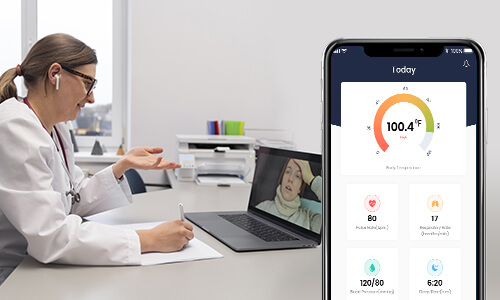
As telehealth has made remote care possible, it is also easier to record a person’s vitals in real-time using smart devices. In this way, nurses can assist with diagnosing a person virtually and decide if immediate care is necessary. The best part? This approach works before a patient comes for an in-person visit and after a patient has been discharged.
Telehealth has been a boon for people suffering from diabetes and health disease conditions. Depending upon the severity of their conditions, such patients need frequent medical examination and follow–up consultations, and it is necessary to check their vitals more often than other patients. Nurses equipped with telehealth can help multiple patients manage their conditions virtually, without coming over to the clinic physically. By keeping an eye on vitals, nurses can clarify a patient’s overall health and physical advice consultations only if there are early warning symptoms of emergencies. Such an approach helps reduce the cost of care, increases its accessibility since the distance is no longer a concern, and helps nurses cater to more patients. In other words, it becomes a win-win for providers and patients if nurses can leverage telehealth.
The pandemic greatly accelerated the adoption of telehealth. As more providers implemented it, the role of nurses in it only grew. It stands to reason that nurse have a larger role in the future of telehealth.
5. How Does Telemedicine Benefit Nursing?
We’ve seen the potential of nursing clubbed with telehealth and how it can help the healthcare industry. But when it comes to the actual care process, telehealth itself can offer a shot in the arm for nurses. In this section, we talk about how telemedicine can empower nurses.
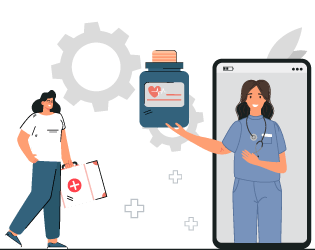
We’ve seen the potential of nursing clubbed with telehealth and how it can help the healthcare industry. But when it comes to the actual care process, telehealth can offer nurses a shot in the arm. In this section, we talk about how telemedicine can empower nurses.
Today, telehealth solutions are growing, and healthcare providers are keen on adopting these services. Many integrated healthcare solutions incorporate telehealth in their range of services. In nursing, telemedicine solutions offer a myriad of benefits, which are-
I. Educating the Elderly about Telemedicine

Telehealth in nursing isn’t just caring delivery but also includes other support services. The senior population, who aren’t well-versed with technology, requires support from nurses. Telehealth apps or software that works as a communicative tool enables nurses to explain and educate older people about using a telehealth platform. Moreover, telemedicine in nursing also allows nurses to give attention to their queries from Time to Time.
It’s well known that seniors aren’t as technically adept as others. So nurses need to provide basic training for helping seniors use telemedicine platforms, and it goes a long way in helping increase their access to care.
II. Not Bound to One Department, Explore More Areas

Nurses working on location at a hospital or clinic are too busy to explore other healthcare areas. Telehealth nurses can learn state-of-art therapies in care delivery. This will allow them to grow and learn more.
It is often said that upskilling is necessary in a world disrupted by technology, which also holds for nursing. A hidden advantage of telemedicine is that it allows nurses to branch out to other departments at hospitals and diversify their skillsets.
III. Build a Better Relationship with Patients
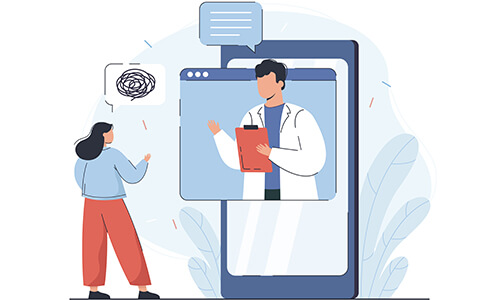
Telemedicine in nursing improves the patient-provider relationship. Nurses get more time with patients and can support without formal hospital rules. Patients get help for diseases and mental support for trauma related to the disease.
The best part is, patients can reach out to doctors virtually and get their queries resolved at any time without having to book another consultation. Experts agree that telemedicine can improve the overall patient experience.
IV. More Flexibility in Work

Nurses often reported feeling overburdened with work. Reports highlighted that nurse are also willing to quite due to excessive pressure. However, telehealth solutions give more flexibility to nurses. Nurses in telemedicine will have a work-life balance too.
This is not at all surprising since telehealth and individual telemedicine technologies help nurses, as well as doctors, serve more people. Being able to treat non-urgent cases from home reduces the volume of patients to deal with at hospitals, which helps the staff do more. The pandemic pushed the healthcare system to its limits, and telemedicine allowed nurses to help patients without coming over. To sum it up, the flexibility derived from telehealth helped the patients, nurses, and doctors.
V. Quicker Health Access
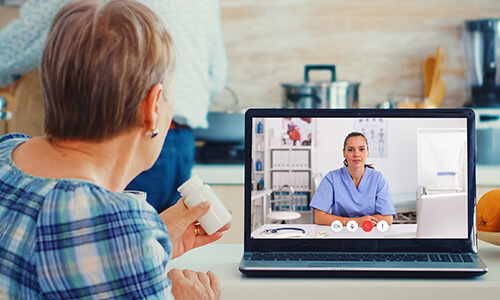
Quicker health access is one of the most important benefits of telemedicine in nursing. In traditional nursing, nurses had to wait to deliver care per schedule, which led to a decline in patient satisfaction. However, nurses can assure quicker health access and better patient experience with telemedicine solutions.
As people can connect with nurses remotely, it eliminates the need to travel to the clinic physically. It has provided an excellent means of extending care to people who have difficulty traveling or those who live in remote, rural locations. Moreover, patients don’t feel like they need to wait since they’ll be at home doing whatever they want until their turn.
6.Challenges in Nursing with Telemedicine
As we’ve seen earlier, telemedicine has demonstrated enormous potential to address many challenges in the healthcare industry. But that’s not to say that there are challenges associated with implementing telemedicine itself, and this section explores some of those difficulties.

As we’ve seen earlier, telemedicine has demonstrated enormous potential to address many challenges in the healthcare industry. But that’s not to say that there are challenges associated with implementing telemedicine itself. This section explores some of those difficulties.
Telemedicine in nursing also helps in improving population health management and patient engagement systems. But some challenges affect telehealth nursing. The adoption of telemedicine in nursing has several roadblocks that nursing centers must eliminate. Some of those include –
a. Lack of Tech Knowledge
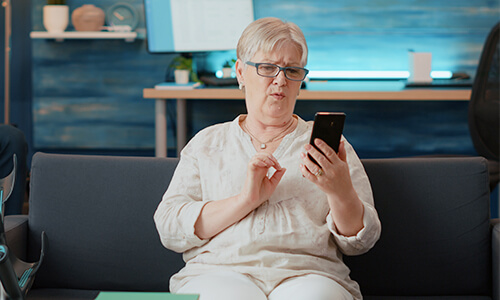
In the U.S, the population of baby boomers is increasing. And the use of advanced telemedicine solutions has the potential to keep track of the elderly population’s health. But the main barrier is the lack of smartphones accessibility. Senior patients have smartphones, but they aren’t tech-savvy enough to control telehealth apps or software.
Telemedicine is bound to be used by people from all walks of life. But not all of them can operate smartphone applications. Designing a user-friendly interface for the same is a challenge in telemedicine, and it needs extensive market research, knowledge of the targeted customers, and innovation.
b. Reimbursements constraints
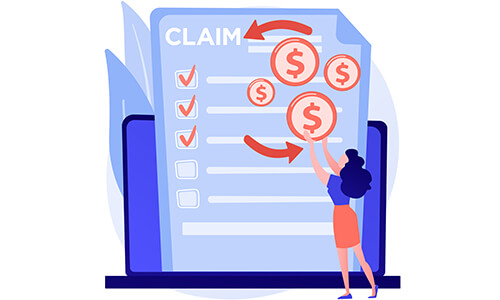
Another barrier that many nursing centers are interested in telemedicine is reimbursement constraints. Reimbursement issues in telehealth nursing led to revenue loss, and the nursing center might end in losses, and expenses will increase to tackle this issue. So, health leaders suggest opting for a vendor who can customize their telehealth nursing app/software. Besides, nursing providers must ensure that their telehealth services are HIPAA compliant solutions to avoid such issues.
c. Lack of training

Nurses in telemedicine require proper education and training on handling the telehealth system. If nurses aren’t tech-savvy, delivering care virtually is impossible. So, the nursing provider needs to train and educate nurses to improve their telehealth nursing. Apart from care delivery, managing other tasks in telemedicine apps also requires training, especially in electronic data exchange or medical records management.
This might pose a problem for people who aren’t good with using technology – both nurses and patients, and it could directly affect the quality of care being delivered.
d. Licensing issues

Nursing centers adopting telemedicine often fear licensing problems, and Telehealth apps and software must comply with HIPAA or other regulatory policies to ensure its validity. And failure in licensing is a big step back in adopting telemedicine in nursing. Even every practice management adopting such virtual care solutions must comply with these regulations.
Telemedicine in nursing is a little different from regular healthcare delivery. In nursing, it’s more about regular tracking and supportive care. Chronic, post-surgical patients, senior people, or behavioral health patients require regular nursing support. Moreover, this nursing care must be accessible, and searching for quality within the same must also be easier for patients.
7.How Does Telemedicine in Nursing Improve Access to Healthcare?
Equitable access to quality care has been one of the biggest problems plaguing healthcare in the United States and worldwide. Large, metropolitan cities tend to have the best specialists, equipment, and access. People from far-flung, underserved communities struggle to access the same level of care. This part elaborates on how telemedicine can help bridge that gap.
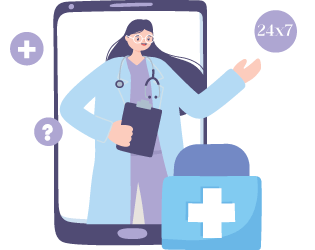
RNs and scheduling appointments impose problems in getting easy health access. However, telemedicine in nursing is the silver lining to these problems. Telemedicine in nursing care also improves health access and overall patient experience with multiple benefits.
I. Special Care to Chronic Patients
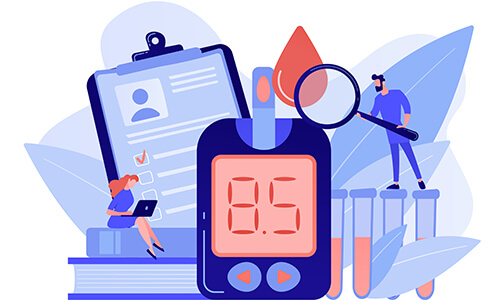
Chronic conditions like diabetes or hypertension require constant tracking of body vitals. And telemedicine in nursing can manage this in chronic patients. Nurses and chronic patients can interact at their convenience. Moreover, alongside advanced telemedicine, nursing care providers can also invest in integrated healthcare solutions to enhance their quality of care.
The result – patients can get in touch with nurses with a few clicks and get clarification about any aspect of their care. People with chronic conditions can eventually change healthier lives, and rest assured that help is just a call or click away.
II. Faster Access to Care
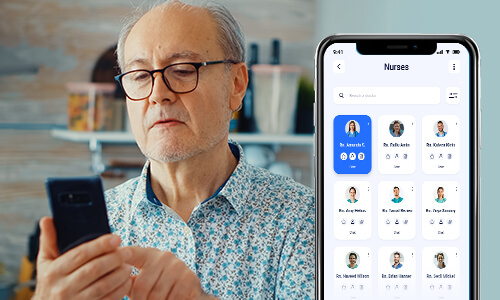
Telehealth software systems in nursing make access to quality care in no time possible. Telemedicine apps are the mode that allows patients to connect with nursing care anytime. Faster access to care means speedier recovery and better patient experience. These telehealth apps help patients find suitable nurses every time they need one through healthcare automation solutions. The best part – people can connect with nurses even if they live in another city. Distance is no longer a problem in finding medical help quickly.
Improved access to care for all people irrespective of their location is perhaps the biggest advantage of telehealth.
III. Critically-ill patients stay risk-free

Patients with dementia or Alzheimer’s require constant attention, and these critically-ill patients can get timely and regular care with telehealth nursing practice. Moreover, nurses need to ensure that their patient health records are managed well for these patients. Nursing providers can utilize healthcare analytics solutions or healthcare interoperability to share and track patient data, and this data will aid in the patient’s future care.
IV. Saves time and offers flexibility

Of all benefits that improve health access, advanced telehealth solutions in nursing save time for both entities. Patients need not travel to the nursing center or wait for the nurse to visit. Just one video call and patients get access to care in no time. Besides, patients also get flexibility in choosing their nursing care services. All these boost health accessibilities.
When people no longer feel the need to travel, they are less likely to flock to the biggest hospital. They could contact nurses at any clinic or ambulatory care center for help. It means lesser waiting times for people and reduced burden for nurses in large hospitals since fewer people would turn up in person.
V. Cheaper for patients
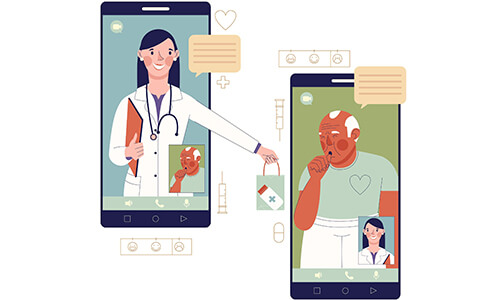
Care cost is a big aspect for patients. Some patients can’t afford adequate nursing care due to financial constraints. But telehealth apps can change this. Telehealth nursing services will cost less than traditional visits. And this indicates that telemedicine in nursing improves health access.
Access automatically goes up when costs come down, which is extremely important for people who can’t afford care. So, in addition to improving access by eliminating geographical barriers, telemedicine also removes many financial obstacles.
8.Importance Of Software For Telemedicine In Nursing Homes
Nursing homes, assisted living facilities, and retirement communities are filled with people who might be unable to seek care alone. Such organizations house the aging population needing constant care and observation.
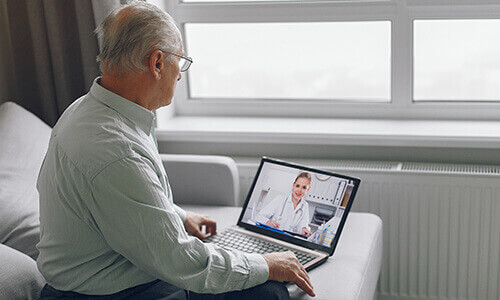
Platforms for telemedicine in nursing help elders connect with caregivers remotely. This is a highly promising solution to the growing shortage of caregivers for the elderly. Many public health officials have sounded the alarm on the problem of senior care in the United States. Custom healthcare software solutions for telehealth can act as a remote health monitoring system for seniors.
The country’s rapidly aging population will have grown to tens of millions by the end of this decade. But the number of caregivers for this population hasn’t kept up. In light of this, software for telemedicine in nursing can address this challenge. A dedicated digital system for telehealth nursing would enable seniors at care facilities to connect with nurses at hospitals or other agencies.
Doctors provide primary care, while nurses handle most of everything else. This can include talking to patients about prescriptions, dosages, refills, appointments, and things to do after surgeries. It is safe to say that nurses handle a significant portion of patient care. The same can be extended to seniors at retirement homes.
Software for telemedicine in nursing can bridge the gap between the number of elders and the care they need. Using this, administrators at senior care centers can connect with nurses remotely and facilitate preliminary check-ups or help with clarifications. The nurses can be a part of a hospital or a home care agency. Either way, a digital platform for telemedicine in nursing will go a long way in improving the quality of life and clinical outcomes for seniors.
As its popularity increases, more and more healthcare technology companies have been developing platforms for telemedicine in nursing. It is a feasible solution to a major healthcare problem in the country.
9.How Can Nurses Accelerate the Growth of Telehealth?
There is little doubt as to the impact of telehealth on the overall medical industry. We have also seen how important the potential of telemedicine in nursing is. This section will see how nurses can stimulate the growth of telehealth and its rapid implementation across the industry.
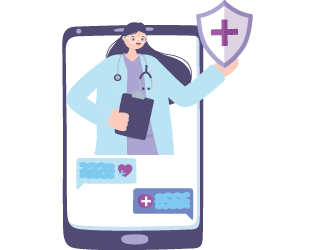
There is little doubt as to the impact of telehealth on the overall medical industry. We have also seen how important the potential of telemedicine is in nursing. In this section, we will see how nurses can stimulate the growth of telehealth and its rapid implementation across the industry.
A nurse at an ambulatory care center can monitor about five to eight patients, and anything more than that would put a burden on the nurse and the organization’s resources. At larger hospitals in metropolitan cities, nurses would have their hand’s full monitoring patients across an entire floor, among different departments.
Nurses might have to track each patient’s health closely at assisted living facilities and retirement homes since such people are likely to be at higher risk. While all of these requirements are well known, it is also clear that there aren’t enough nurses or doctors to fill in the volume of necessity. In other words, the ratio of medical professionals to people needs to improve, especially as more and more of the population ages. Add to this the growing costs of healthcare, which makes it less and less accessible to everyone, especially for communities in faraway regions.
Telehealth has demonstrated an amazing solution that can chip away at the severity of these problems in the United States. Nurses can use telemedicine platforms to virtually monitor over 25 patients at a time. At clinics and assisted living facilities, this ability directly translates into greater availability of nursing care with the same number of nurses. Moreover, a telemedicine solution also extends the geographical outreach of nursing, further reducing the inequity in access to care.

Many patients don’t have to see their doctors in person all the time. All they might need could be some help taking insulin, dosage for medications, or even something as small as foods to avoid. These simple queries could easily be resolved in minutes over a video call by the nurses themselves, instead of the patients coming over to consult with doctors. Nurses often help manage clinical workflows by keeping non-urgent cases at home through a virtual consultation. As a result, such patients won’t have to come to the hospital and receive care in their homes remotely. This would free up time, energy, and resources for nurses and doctors to focus on patients with serious conditions.

Such a level of optimization reduces the waiting times for urgent cases and makes more doctors indirectly available to treat them. Additionally, the people without any serious conditions won’t need to wait for small clarifications, nor spend a lot of money. In other words, this makes things vastly simpler for the doctors, nurses, and patients with varying degrees of urgency.
Even though people might book virtual appointments with doctors, the nurses coordinate the process. Accepting in-take forms, acquiring patients’ health history, and acting as intermediaries to ensure that virtual consultations go on smoothly are responsibilities that nurses carry out. As telehealth spreads countrywide, the role of nurses has only grown more important to ensure the optimal running of clinical operations.
The pandemic forced many people to remain indoors. This had the unforeseen consequence of telemedicine being adopted rapidly. In addition to hospitals and clinics, nurses now use telehealth to help patients through post-acute care for faster recovery and better health management. A video call over a telemedicine application would reveal more about patients than mere phone calls. It would help them make informed decisions about how serious a patient might be and if they need to have an in-person consultation immediately.
Nurses have been the primary caregivers at schools, companies, hotels, rehabs, physiotherapy centres, etc. They almost always act as the first point of contact for patients when they book appointments and come over for them.

Moreover, nurses monitor patient health at hospitals and senior care facilities to check for critical conditions. In addition to the actual care, nurses have also helped educate patients about using telehealth technology and improved access to care for many people. Moreover, they’re also there to help people navigate the application and assist with troubleshooting.
Nurses had a transformative effect on healthcare during the eighteenth century. Fast forward to the twenty-first century, they’ve also been integral to the growth and adoption of telehealth solutions among patients. Numerous healthcare institutions have begun conducting mandatory training sessions in telehealth for nurses to prepare them for the change.
In light of the undeniable importance of nursing in telehealth, it only makes sense for them to be completely involved in it and become stakeholders. They’ve been a silent engine of its widespread growth.
10.Where Would Telehealth Nurses be Needed?
Telehealth is rapidly expanding its footprint across the healthcare industry in the United States. We’ve already seen the part nurses play in the utilization and expansion of telehealth, and this part talks about the medical settings where telehealth nurses can make a difference.

Telehealth is rapidly expanding its footprint across the healthcare industry in the United States. We’ve already seen the role nurses play in telehealth utilization and expansion. This part discusses the medical settings where telehealth nurses can make a difference.
The idea of telemedicine is over a decade old, but few wanted to talk about implementing it. It took a major pandemic and stringent curfews for the conversation around telehealth to begin anew. In light of such an unprecedented situation, nurses had to get acquainted with telehealth quickly and use it with little to no training. But it ended up going great, and now as the pandemic recedes, telehealth technologies are increasingly entwined with nursing.
The role of nurses in telehealth can be traced back to the second half of the previous century. NASA (National Aeronautics and Space Administration) used an early form of telehealth to track astronaut health while they were in space. As the years passed, nurses began to take up an increasing amount of responsibility by collecting health vitals over the phone and triaging.

Later on, triaging over the phone grew into a steadily increasing degree of care from remote locations. Today, that role has expanded to include most ambulatory care centers and large hospitals. Doing so helps to relieve the burden of doctors so that they may focus more on patients who’re physically present. As remote triaging increased, it allowed clinics to manage the volume of patients better.

The pandemic has resulted in the widespread use of telehealth applications. Telemedicine in nursing now includes nurses in the same room as patients for checking vitals and communicating with doctors virtually. The doctors would, of course, be located elsewhere. This is one of telehealth’s most important and widely used aspects in situations that don’t require hospitalization. Nurses act as eyes and ears of the doctors, administer medication to patients, and coordinate real-time care with doctors. A single doctor can work with multiple nurses over a wider geographic area and deliver effective care without actually being next to the patients. There are limitless possibilities for people from underserved communities who struggle with a lack of access to specialist care.
Telehealth has spawned remote patient monitoring technologies to check signs such as heart rate, blood pressure, body temperature and send the data to providers or nurses.
Telemedicine in nursing can essentially amplify the capacity to deliver care. It cuts down the need for doctors, as nurses can travel to the patients’ locations and connect with doctors over telemedicine platforms. Such a system would be enormously helpful in the following settings –
- Schools & Universities
- Ambulatory care centres
- Prisons
- Home health
- Assisted living facilities
- Hospice care
- Military installations and battlefield medicine
In addition to the above, subject matter experts have also considered the role of telemedicine in nursing, even in space, which is widely touted to be humanity’s next frontier.
11.Aspects of Telehealth Education in Nursing
We know the undeniable role of telehealth and telemedicine in nursing, and the next step would be to formally incorporate the technology into nursing education. This section explores what it would take for introducing telemedicine in nursing education to make it an official part of healthcare.

We know the undeniable role of telehealth and telemedicine in nursing. The next step would be to formally incorporate technology into nursing education. This section explores what it would take to introduce telemedicine in nursing education to make it an official part of healthcare.
There needs to be a framework to incorporate telehealth into medical education. A comprehensive, sweeping policy would go a long way in ensuring an effective education that prepares future batches of nursing graduates to take up responsibilities. Such a framework involves strategizing, preparation, delivery, and appraisal. We will explore each aspect of the components –
a.Strategizing
Nurses need to be at the forefront of telehealth at their organizations across the country. So, it is important that they know their role in a telehealth program and understands the requirements. It’s only through education that this can be achieved. Telehealth education in nursing could be done as a part of the routine pedagogy.

Nurses must know about all the advantages of using telemedicine and the problems in actually implementing it. The hardware and software parts of the problem aside, some of the barriers might also be with the patients themselves. For example – patients who are not at all used to technology might reject telemedicine applications outright, or people with learning and developmental disorders wouldn’t be able to learn to navigate telehealth applications. The same thing applies to specially-abled individuals.
These considerations limit the use of telehealth technologies. Moreover, not every location might have the required internet speeds to support a feasible virtual session with a doctor or a nurse. In light of these issues, it becomes extremely important for nurses to know if or not they can rely on telehealth, and if yes, then to what extent.
Moreover, there are legal considerations to know. Each state is bound to have varying regulations, and what’s allowed in one state might not be in another. A patient residing in one state can’t have a virtual consultation with a nurse in another state. There are licensing hurdles that prevent this.
So, a sound strategy is important when implementing a program for telemedicine in nursing at healthcare organizations.
b. Preparation

After considering all of the concerns, once a strategy has been fixed, it’s time to prepare to implement telemedicine in nursing at the respective organization. It would include establishing procedures and protocols, training the relevant staff about the protocols, setting up the equipment, configuring the software, mock drills, etc.
The protocols must be comprehensive and address every medical possibility. Some examples of this include – scheduling remote sessions, identifying potential emergencies, ensuring data security of patients, educating patients, and so on.
This is necessary because nurses would know what to do in every situation. Like an emergency room where doctors know what to do, it becomes necessary for nurses to know the steps in telemedicine.
c. Delivery
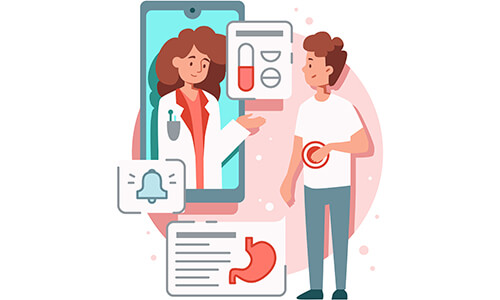
As the name indicates, this phase involves delivering the care using telehealth technologies. The delivery involves the diagnosis and care and sets up the stage for two-way communication using devices. Talking to patients in person might feel different than doing so virtually. Younger patient’s adept at using technology might make it easier for the nurses to interview and diagnose them. However, the same can’t be said about elders who aren’t technically savvy. So, it becomes necessary for nurses to know how to navigate the problem of the technological aptitude of patients.
A part of their education must include training nurses to instruct patients on the use of telemedicine applications. Moreover, they must also know how to use remote patient monitoring technologies to remotely view, collect, track, and report a patient’s health status. The entire experience must not feel too different compared to a physical consultation for the patients. If that doesn’t happen, the patients are unlikely to prefer using telehealth in the future.
d. Appraisal

This phase concerns assessing the telehealth sessions based on their impact. This step allows providers and policymakers to gauge the effectiveness of telehealth programs and derive valuable insights on where they can be improved. The evaluation will be carried out on the effectiveness of nurses, providers and the protocols followed.
This step is essential since telehealth and telemedicine in nursing are still in their infancy. As more data is collected on the matter, providers and policymakers can develop an effective roadmap for expanding telemedicine and implementing it across urban and rural locations.
Conclusion
Just as nursing became an integral part of healthcare back in the day, it is becoming one as telehealth expands its footprint. Telemedicine in nursing will surely grow as technologists, philanthropists, and government agencies come to recognize its role and encourage investments in the same.
With advances in telecommunication technologies and innovations in mHealth enveloping the country and the whole world, it won’t be surprising to see a future where nurses and doctors coordinate to care for a patient while being located in different cities, states, or even countries, each. Greater access to care, better collaboration among doctors, faster medical workflows, reduced inequity in healthcare are some of the benefits that telemedicine in nursing is promising to deliver. With as many advantages, it’s no surprise that telehealth is the future of the medical industry.
OSP is a trusted software development company that delivers bespoke solutions as per your business needs. Connect with us to hire the best talents in the industry to build enterprise-grade software.

How can we help?
Fill out the short form below or call us at (888) 846-5382
Looking for software solutions to build your product?
Let's discuss your software solutions for your product in our free development acceleration call!
Get In Touch arrow_forwardDiscuss Your Project Handover with a team of expert Book a free consultation arrow_forward
About Author

Written by Riken Shah linkedin
Riken's work motto is to help healthcare providers use technological advancements to make healthcare easily accessible to all stakeholders, from providers to patients. Under his leadership and guidance, OSP Labs has successfully developed over 600 customized software solutions for 200+ healthcare clients across continents.







